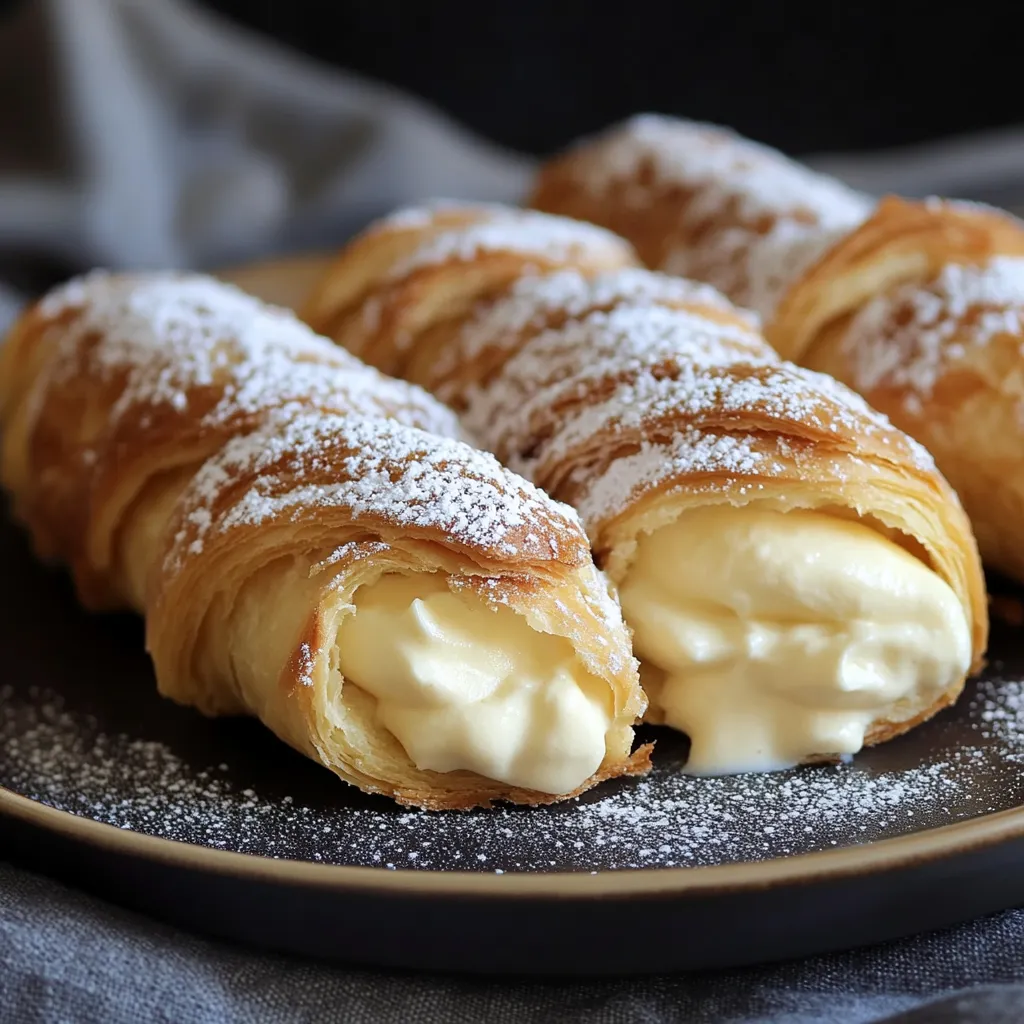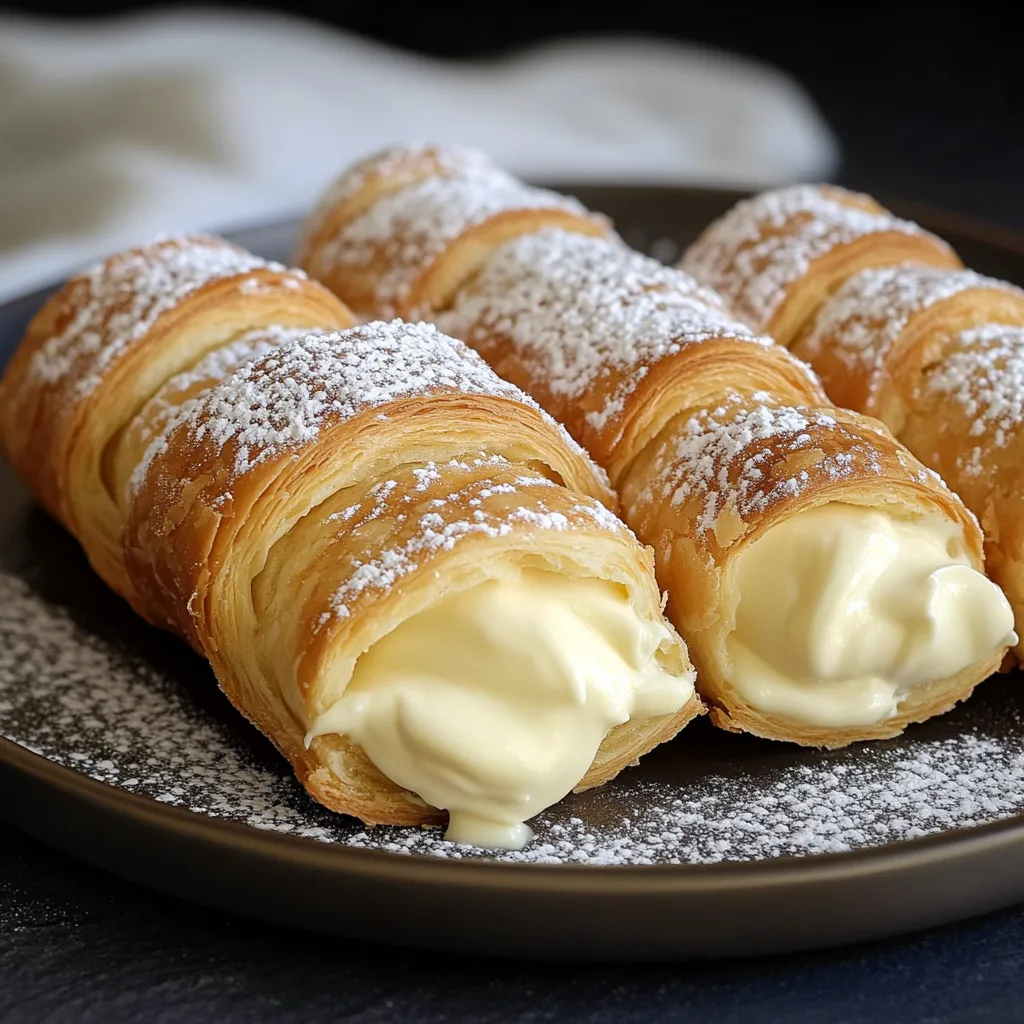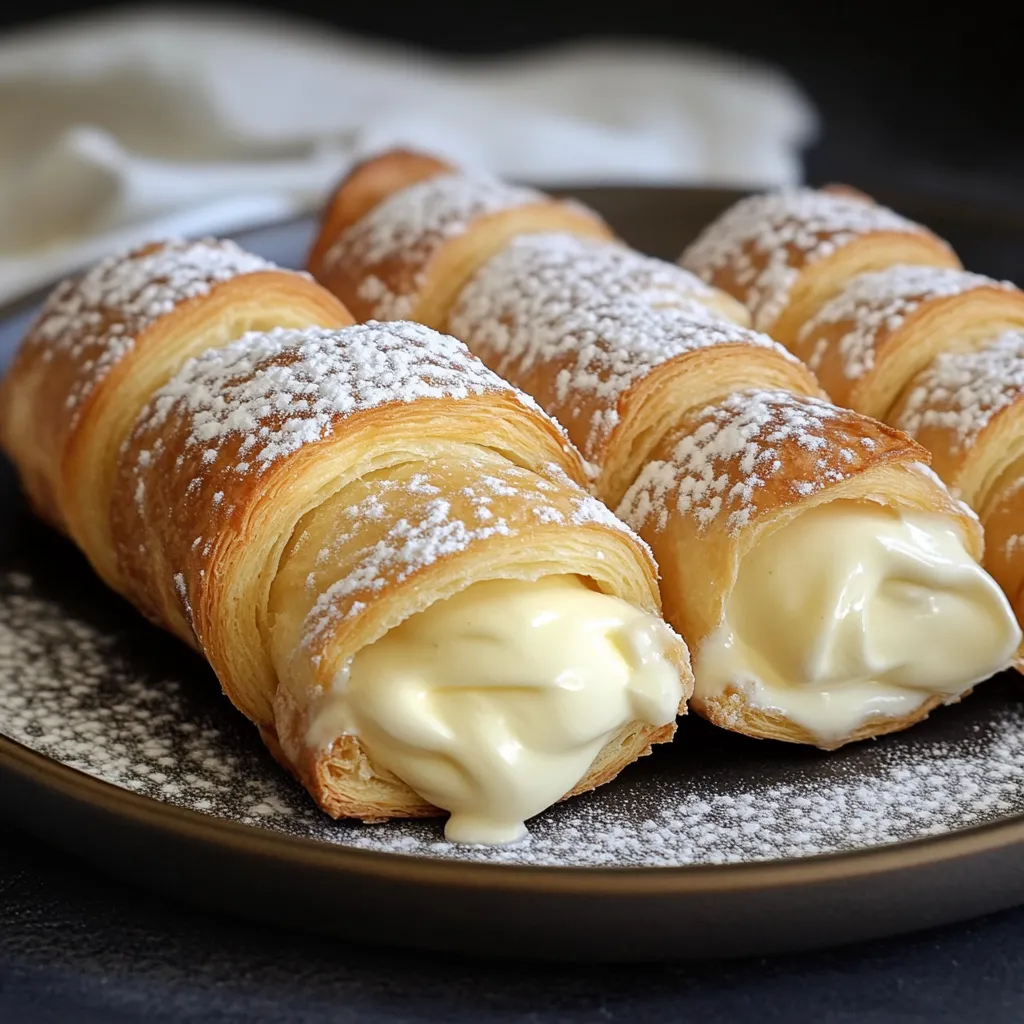 Save
Save
Flaky puff shells filled with luscious Italian cream create an authentic taste of Italy right from your own home. These horn-shaped treats balance delicate, buttery layers with smooth, velvety filling. When you bite in, you'll enjoy that amazing contrast between the crisp exterior and the rich, silky cream inside – it's what makes these classic Italian cannoncini so popular across the world.
I first tasted these cream-filled delights at a tiny bakery tucked away in Florence. When I got back home, I couldn't stop thinking about them. It took me several tries, but this version finally captures that real Italian magic that brings me back to that little shop. Now my family asks for these treats whenever we celebrate anything special.
Complete Ingredient Breakdown
- Egg Yolks: These add wonderful richness and smoothness to your filling. Let them sit out until they reach room temperature so they mix better with everything else. The natural stuff in yolks helps all your ingredients come together for that super smooth texture.
- All-Purpose Flour: You only need a bit to get your custard just right. Make sure to sift it first so you don't get any lumps in your smooth cream. When heated, the starch in flour soaks up liquid and gets bigger, which makes your filling thick and perfect.
- Sugar: It does more than make things sweet – it helps your custard stay stable and makes vanilla taste even better. Pick the fine stuff since it melts easier and won't make your cream grainy.
- Vanilla Extract: This gives your custard its basic flavor profile. Real extract tastes way better than the fake stuff. Look for the dark kind with tiny specks for the most genuine flavor experience.
- Whole Milk: This forms your creamy base. The fat in whole milk gives you richness that you just can't get from low-fat versions. Heat it slowly so it doesn't burn.
- Puff Pastry: This makes your cannoncini shells. Don't go cheap here—butter-based dough gives you the best flavor. All those tiny layers create that amazing light, flaky bite that works so well with the creamy inside.
- Egg Wash: This gives your pastry that beautiful golden color and shine. Just beat one egg with a tablespoon of water and you're good to go.
- Powdered Sugar: The finishing touch that adds a bit of sweetness and makes everything look pretty. It melts nicely on warm pastry.
Making Stunning Cannoncini
- Getting Your Filling Ready:
- Warm your milk in a pot but don't let it boil. In another bowl, mix your egg yolks, sugar, vanilla, and flour until they're smooth and a bit lighter in color. The mixing adds air that'll make your custard lighter. Slowly pour the warm milk into your egg mix while you keep whisking. This warms the eggs gently so they don't scramble. Pour everything back into the pot and cook on medium heat, stirring all the time with a wooden spoon, until it gets pudding-thick. You'll know it's ready when it coats the back of your spoon and stays put when you run your finger through it. Move it to a bowl, put plastic wrap right on the surface so it doesn't form a skin, and chill it for at least an hour.
- Shaping Your Shells:
- Get your oven hot at 400°F (200°C). Cover your work space with sugar instead of flour. This sugar will make a caramelized outside on your pastry when it bakes. Roll out your puff pastry to about 9×12 inches, pressing it into the sugar. Cut it into twelve 1-inch strips with a sharp knife or pizza cutter. Starting at the tip, wrap each strip around a metal horn mold, slightly overlapping as you go. Keep the sugar side facing out. Put them on a parchment-lined baking sheet with room between them to grow.
- Baking Your Shells:
- Mix one egg with a tablespoon of water until well combined. Brush this all over your pastry horns, but don't let it puddle anywhere. This helps them turn golden and shiny. Bake them for 15-20 minutes until they're deep gold and puffed up with clear layers. Watch them closely at the end so they don't burn. Let them cool a bit before gently twisting to take off the metal molds.
- Putting It All Together:
- Let both your shells and custard cool completely. Put your chilled filling in a piping bag with a star tip. Push the tip deep into each shell and fill generously until cream shows at both ends. Just before serving, dust them with powdered sugar. Don't do this too early or the sugar will just melt into the cream.
 Save
Save
I've found I really like adding a bit of lemon zest to my filling. That little touch of citrus cuts through the richness and makes the whole dessert taste brighter. My grandma always told me the key to perfect cannoncini was taking your time—never rush when cooking the custard if you want that silky texture that makes these pastries so special.
Delightful Serving Ideas
These elegant treats pair wonderfully with other flavors. Try serving them with fresh berries mixed with a touch of sugar and lemon juice for a pretty color contrast and fruity balance to the rich pastry. If you're feeling extra fancy, drizzle some good chocolate sauce on the plate before adding your cannoncini. They're amazing with coffee—try them with espresso or cappuccino for a true Italian café experience. For special events, arrange them on a tiered stand with fresh flowers and other pastries to create a gorgeous dessert display.
Tasty Twists
The standard vanilla filling works as a great starting point for trying new things. You might soak coffee beans in your milk before making the custard for a grown-up coffee-flavored filling. Chocolate fans can mix in two tablespoons of cocoa powder to the custard before cooking. For something different, try folding finely chopped pistachios into your filling for a nice crunch and nutty taste. If you like citrus, swap the vanilla for orange blossom water and add fresh orange zest to your custard. You can even change up the pastry by mixing spices like cinnamon into the sugar coating before rolling.
Keeping Things Fresh
Empty shells stay crisp when kept in an airtight container at room temperature for up to two days. The custard stays good in the fridge for up to three days if you cover it with plastic wrap pushed right onto its surface. For the best results, fill your shells shortly before serving rather than storing them already filled. If you must store filled cannoncini, keep them in the fridge for no more than four hours, otherwise the shells get soggy from the moisture in the filling. Before serving stored cannoncini, let them sit out for 15 minutes and add a fresh dusting of powdered sugar.
I've learned that watching your temperatures throughout the process really makes or breaks these cannoncini. The pastry needs to stay cold until it hits the oven, while the custard needs slow, careful heating to get that perfect smooth texture. These Italian cream horns show everything that's great about baking—simple ingredients and good technique coming together to make something amazing. They might look tricky at first, but once you master them, you'll feel so proud and create wonderful memories sharing them with people you care about.
 Save
Save
Recipe FAQs
- → Can I whip up the custard early?
- Sure! The custard can be made up to 2 days ahead. Just cover it tightly with plastic touching the surface in an airtight container to stop a skin from forming.
- → What should I use if I lack molds?
- No molds? No problem! Make your own using aluminum foil. Wrap foil around a wooden spoon handle, slide it off carefully, and you're good to go.
- → Can these pastries handle the freezer?
- Freezing filled pastries isn't ideal. Freeze the empty shells instead, warm them in the oven once thawed, and fill them fresh.
- → Why wasn’t my pastry flaky enough?
- Pastry struggles to puff if it’s too warm. Keep it chilled before baking, and if it softens too much while prepping, toss it back in the fridge for a bit.
- → How long do they taste the best?
- They’re tastiest within a day of being assembled. Pop leftovers in the fridge, but remember, the shells will soften over time.
